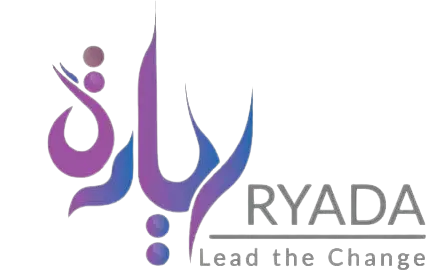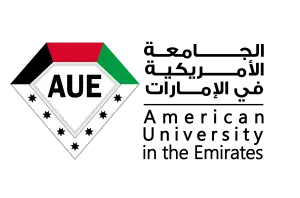English Business Writing Master
Unlocking Success Through English Business Writing Excellence
About Course

Why Choose this Training Course?
This 3-day English Business Writing course aims to equip participants with the fundamental skills, advanced techniques, and practical applications required for effective business writing in various professional contexts. Each module is designed to be interactive, incorporating hands- on exercises, real-world examples, and opportunities for participant engagement. Each module can be taught as a stand-alone unit.
To optimize the benefits of an English Business Writing Mastery program a needs analysis needs to be done to make sure that the program focusses on the needs of the participants. This may result in a shorter more focused course that covers all the outcomes required.
Day 1: Foundations of Effective Business Writing Module
Objectives
· Understanding the importance of effective business writing
· Identifying the audience and purpose of your writing
· Common challenges in business writing
Activity 1: Understanding Your Audience
Participants collaborate in small groups and receive a unique business scenario, like drafting an email to a client or a report for management. They assess the audience’s needs, expectations, and familiarity with the topic. They discuss their findings and highlight essential considerations for audience-focused writing.
Activity 2: Solving Writing Challenges
In teams, participants confront real-world writing hurdles, such as unclear instructions or contradictory emails. They identify these issues within the provided scenarios and devise practical solutions. Teams then present their findings and solutions to the entire group, fostering productive discussion and collective problem-solving.
· Writing clear and concise sentences
· Avoiding jargon and overly complex language
· Practicing readability and comprehension
Activity 1: Sentence Editing Challenge
Participants receive long and convoluted sentences from business documents.
They work individually to rewrite the sentences, making them clearer and more concise. Participants compare their revisions and discuss the principles of clarity and conciseness in writing.
Activity 2: Jargon or Clarity Game
Participants are given sentences with industry-specific jargon mixed with clear, concise sentences. They identify and discuss which sentences are easier to understand and why. This interactive game highlights the importance of avoiding unnecessary jargon in business writing.
Objectives
· Crafting effective introductions and conclusions
· Organizing content logically
· Mastering the art of outlining
· Module 3: Structure and Organization
Activity 1: Introduction and Conclusion Workshop
Participants are given sample business documents (e.g., reports, memos, or emails) with weak or ineffective introductions and conclusions. They work individually or in pairs to rewrite and improve these sections. Participants share their revised introductions and conclusions, explaining their choices and highlighting elements that engage the reader effectively.
Activity 2: Logical Content Sorting
Participants receive a set of disorganized information or data points related to a business topic. Working in small groups, they collaboratively organize and structure the content logically, creating an outline or framework. Each group presents their organized content to the class, discussing their rationale for the chosen structure and its impact on comprehension.
Objectives
· Essential grammar rules for business writing
· Punctuation and sentence structure
· Proofreading techniques for error-free writing Activity 1: Grammar Challenge Quiz Participants take part in a friendly grammar quiz with questions related to common grammar rules (e.g., subject-verb agreement, verb tenses, and sentence structure). The quiz is interactive, and participants can compete individually or in teams. After the quiz, a review session covers correct answers, providing explanations for each grammar rule. Activity 2: Proofreading and Editing Exercise Participants receive a document filled with intentional grammatical and punctuation errors. They work individually to identify and correct these errors, focusing on grammar, punctuation, and sentence structure. Afterward, participants exchange their corrected documents with peers for a second round of proofreading, discussing their findings and learning from one another’s insights.
Day 2: Advanced Business Writing Skills
Objectives
· Writing concise and effective business emails
· Formatting and etiquette for email communication
· Responding to different email scenarios
Activity: Effective Email Practice
Participants practice composing professional emails in response to common workplace
scenarios, focusing on etiquette and tone.
Activity: Email Formatting Exercise
Teams collaborate to format emails correctly, highlighting the significance of proper email
structure.
Objectives
· Crafting clear and persuasive memos
· Structuring comprehensive business reports
· Using data and visuals effectively
Activity: Memo Redesign Challenge
Participants redesign and rewrite existing memos for clarity and persuasiveness, showcasing their improvement.
Activity: Report Analysis
Participants evaluate sample business reports to better understand the elements of effective report writing.
Objectives
· Composing formal business letters
· Creating persuasive business proposals
· Requesting and providing recommendations
Activity: Letter Writing Challenge
Participants practice composing formal business letters (e.g., inquiry, complaint, introduction) alone or in pairs. They follow the right format, tone, and language. Afterward, they review each other’s letters for clarity and professionalism.
Activity: Proposal Pitch Presentation
Participants form teams to craft persuasive business proposals for fictional projects. Each team creates a brief pitch to present their proposal to “investors.” The focus is on key points, benefits, and persuasion. Teams get feedback for peer learning.
Activity: Recommendation Exchange
Participants partner up to practice requesting and providing recommendation letters. They take turns as requesters and providers, creating professional letters based on provided information. Afterward, they discuss best practices for this valuable skill.
Objectives
· Formatting documents professionally
· Developing a style guide for consistent writing
· Effective use of templates and tools
Activity: Document Makeover Challenge
Participants get unformatted business documents (like reports and memos) to format professionally. They work alone or in pairs, adjusting fonts, margins, headings, and layout. They then share their polished documents with the group for discussion on formatting best practices. Activity: Style Guide Creation Workshop Participants work together to build a style guide for a fictional organization. They cover tone, vocabulary, formatting, and structure. Each team focuses on a part, and together they create a complete guide. Teams present their sections and ensure it’s consistent. It reinforces writing consistency in a fun, collaborative way. Activity: Tools & Templates Demo Participants explore popular business writing tools and templates like Microsoft Word features and grammar checkers. They get hands-on practice guided by the instructor. They choose a document type (like a project proposal) and create a polished version using these tools. The session ends with participants sharing their experiences and insights on how these tools simplify writing and maintain consistency.
Day 3: Practical Business Writing Applications
Objectives:
· Writing cover letters and job applications
· Responding to inquiries and requests
· Handling complaints and resolving issues
Activity: Inquiry Response Simulation
Participants are provided with a set of inquiry emails from potential clients or customers.
They assume the role of a company representative and respond to these inquiries,
addressing questions, providing information, and maintaining a professional tone. After
composing their responses, participants exchange their emails for peer review, assessing
clarity, completeness, and customer-focused communication. This exercise enhances
participants’ ability to effectively respond to inquiries and provide relevant information.
Activity: Responding to Customer Inquiries
Participants receive a customer inquiry scenario. They draft a response, providing relevant information and maintaining a professional tone. Participants exchange their responses for peer feedback and discuss strategies for effective customer communication.
· Understanding cultural considerations in international business writing
· Dealing with sensitive topics and delivering negative news professionally
· Using inclusive language and avoiding bias
Activity: Cross-Cultural Communication Simulation
Participants engage in a role-play exercise simulating communication with international clients. They navigate cultural differences in communication styles and etiquette. After the role-play, participants reflect on cultural sensitivity and effective cross-cultural communication.
Activity: Writing Sensitive Messages
Participants discuss scenarios involving delivering negative news or addressing sensitive issues. They practice crafting messages that maintain professionalism and minimize potential conflicts. Peer feedback helps participants refine their communication skills in handling delicate situations.
Objectives
Resolving misunderstandings and conflicts Offering constructive feedback
Activity: Misunderstanding Resolution
Participants are paired up. Each pair receives a written scenario involving a workplace misunderstanding. They work together to draft a written response, clarifying the issue and proposing a solution. Pairs exchange their responses and provide feedback. Participants discuss key insights and strategies for resolving misunderstandings in written communication.
Activity: Constructive Feedback Exchange
Participants pair up and take turns providing each other with written feedback on a recent piece of their course work, such as a writing assignment or presentation. The feedback should be specific, actionable, and focused on improvement. Afterward, participants discuss the feedback they received, emphasizing how constructive feedback can enhance their writing and communication skills.
Objectives
Recap of key learnings and progress
Resources for further self-study and improvement
Activity: Reflect and Plan for Growth
Participants engage in a reflective session where they identify and share the most significant insights and skills they’ve gained throughout the course. They discuss how they plan to apply these learnings in their professional roles. Participants then set personal goals related to their future writing and communication development.
Activity: Resource Sharing
The instructor provides a curated list of resources, including recommended books, websites, and online courses, for participants to continue their self-study and improvement in business writing and communication. Participants are encouraged to share additional resources or tips they may have discovered during the course.

